Ford Transit 2017 Owner's Manual
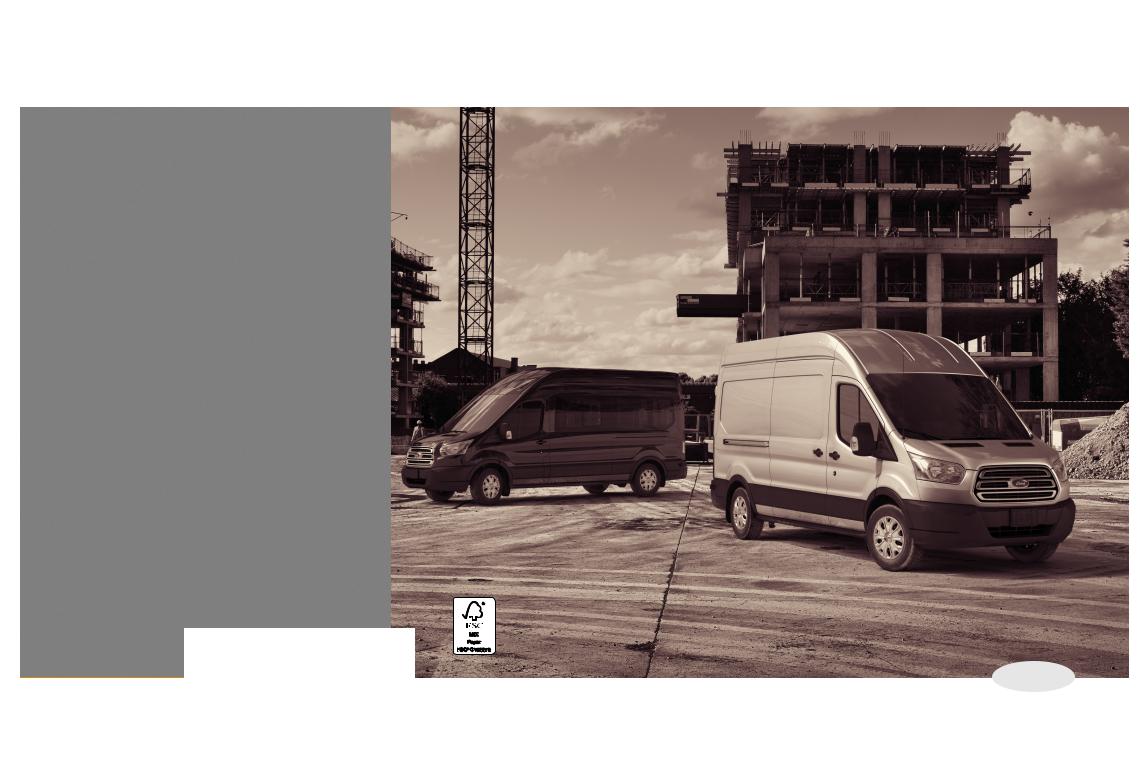
|
|
|
owner.ford.com |
ford.ca |
|
June 2016
First Printing
Owner’s Manual
Transit
Litho in U.S.A.
HK3J 19A321 AA
2017 TRANSIT Owner’s Manual
TRANSITManual2017Owner’s
2571415 17a Transit OM_052516.indd 1 |
5/25/16 3:25 PM |
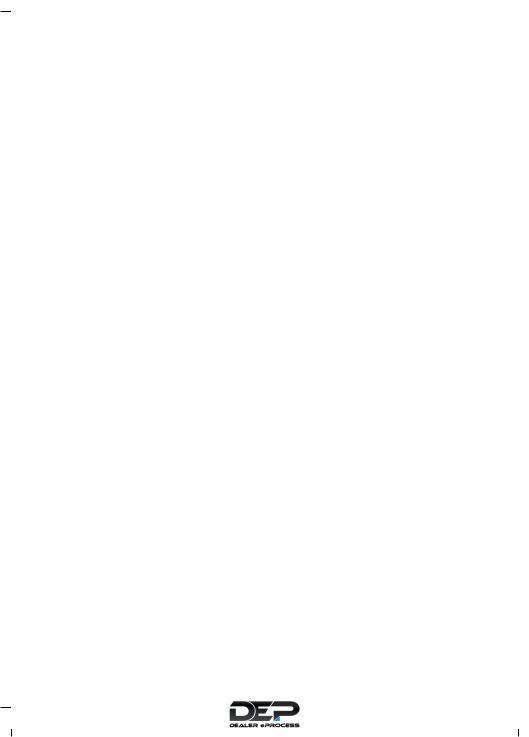
The information contained in this publication was correct at the time of going to print. In the interest of continuous development, we reserve the right to change specifications, design or equipment at any time without notice or obligation. No part of this publication may be reproduced, transmitted, stored in a retrieval system or translated into any language in any form by any means without our written permission. Errors and omissions excepted.
© Ford Motor Company 2016
All rights reserved.
Part Number: HK3J 19A321 AA 04/2016 20160425101536

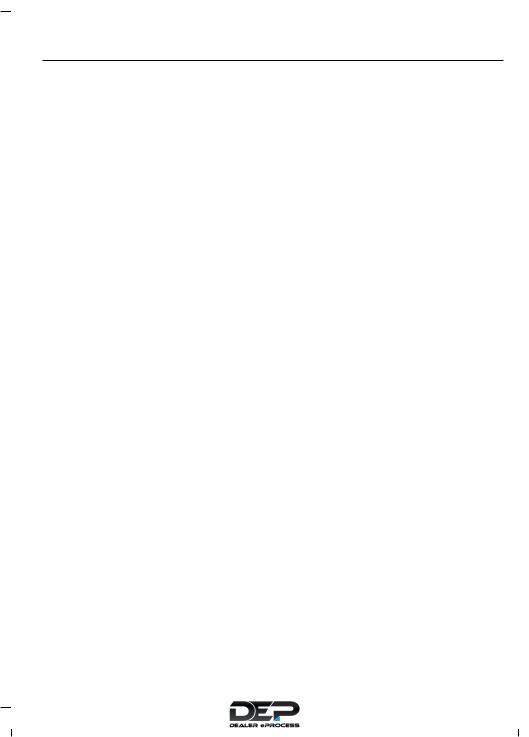
Table of Contents
Introduction |
|
About This Manual........................................... |
7 |
Symbols Glossary............................................. |
7 |
Data Recording.................................................. |
9 |
California Proposition 65............................. |
10 |
Perchlorate........................................................ |
10 |
Ford Credit......................................................... |
10 |
Replacement Parts |
|
Recommendation...................................... |
10 |
Special Notices................................................. |
11 |
Mobile Communications |
|
Equipment..................................................... |
12 |
Export Unique Options.................................. |
13 |
Environment |
|
Protecting the Environment........................ |
14 |
Child Safety |
|
General Information....................................... |
15 |
Installing Child Restraints............................ |
16 |
Booster Seats.................................................. |
25 |
Child Restraint Positioning.......................... |
27 |
Child Safety Locks......................................... |
28 |
Safety Canopy™............................................ |
44 |
Crash Sensors and Airbag Indicator....... |
46 |
Airbag Disposal............................................... |
47 |
Keys and Remote Controls |
|
Principle of Operation.................................. |
48 |
General Information on Radio |
|
Frequencies................................................. |
48 |
Remote Control.............................................. |
48 |
Replacing a Lost Key or Remote |
|
Control........................................................... |
50 |
MyKey™ |
|
Principle of Operation................................... |
51 |
Creating a MyKey............................................ |
52 |
Clearing All MyKeys....................................... |
53 |
Checking MyKey System Status............... |
54 |
Using MyKey With Remote Start |
|
Systems......................................................... |
55 |
MyKey Troubleshooting............................... |
55 |
Doors and Locks |
|
Locking and Unlocking................................. |
57 |
Seatbelts |
|
Security |
|
|
|
Passive Anti-Theft System |
62 |
||
Principle of Operation |
30 |
|||
Anti-Theft Alarm |
63 |
|||
Fastening the Seatbelts |
31 |
|||
|
|
|||
Seatbelt Height Adjustment...................... |
33 |
Power Running Boards |
|
|
Seatbelt Warning Lamp and Indicator |
|
|
||
33 |
Using Power Running Boards |
64 |
||
Chime............................................................. |
||||
Seatbelt Reminder........................................ |
34 |
Steering Wheel |
|
|
Child Restraint and Seatbelt |
35 |
67 |
||
Maintenance................................................ |
Adjusting the Steering Wheel.................... |
|||
Seatbelt Extension........................................ |
36 |
Audio Control................................................... |
67 |
|
Supplementary Restraints |
|
Voice Control................................................... |
68 |
|
|
Cruise Control................................................. |
68 |
||
System |
|
Information Display Control...................... |
69 |
|
Principle of Operation................................... |
37 |
Wipers and Washers |
|
|
Driver and Passenger Airbags................... |
38 |
|
||
Side Airbags..................................................... |
44 |
Windshield Wipers......................................... |
70 |
|
|
|
1 |
|
Transit (TTH) Canada/United States of America, HK3J 19A321 AA enUSA, |
Printing |

Table of Contents
Autowipers........................................................ |
70 |
Windshield Washers....................................... |
71 |
Lighting |
|
General Information...................................... |
72 |
Lighting Control............................................... |
72 |
Autolamps......................................................... |
73 |
Instrument Lighting Dimmer...................... |
74 |
Daytime Running Lamps............................. |
74 |
Direction Indicators........................................ |
74 |
Interior Lamps.................................................. |
75 |
Windows and Mirrors |
|
Power Windows.............................................. |
76 |
Exterior Mirrors................................................. |
77 |
Interior Mirror.................................................... |
77 |
Rear Quarter Windows................................. |
78 |
Instrument Cluster |
|
Gauges................................................................ |
79 |
Warning Lamps and Indicators.................. |
81 |
Audible Warnings and Indicators............. |
84 |
Information Displays |
|
General Information..................................... |
85 |
Trip Computer................................................. |
88 |
Personalized Settings.................................. |
88 |
Information Messages................................. |
89 |
Climate Control |
|
Manual Climate Control.............................. |
95 |
Hints on Controlling the Interior |
|
Climate.......................................................... |
96 |
Rear Passenger Climate Controls............ |
97 |
Heated Windows and Mirrors................... |
98 |
Seats |
|
Sitting in the Correct Position................... |
99 |
Head Restraints.............................................. |
99 |
2
Manual Seats................................................ |
100 |
Power Seats................................................... |
102 |
Rear Seats....................................................... |
104 |
Heated Seats................................................. |
106 |
Auxiliary Power Points |
|
Auxiliary Power Points............................... |
108 |
Cigar Lighter................................................... |
109 |
Storage Compartments |
|
Cup Holders...................................................... |
111 |
Overhead Console.......................................... |
111 |
Bottle Holder.................................................... |
111 |
Starting and Stopping the |
|
Engine |
|
General Information..................................... |
112 |
Ignition Switch................................................ |
112 |
Starting a Gasoline Engine......................... |
113 |
Starting a Diesel Engine.............................. |
113 |
Diesel Particulate Filter............................... |
115 |
Switching Off the Engine............................ |
115 |
Engine Block Heater..................................... |
116 |
Fuel and Refueling |
|
Safety Precautions........................................ |
117 |
Fuel Quality - Gasoline................................ |
118 |
Fuel Quality - E85......................................... |
118 |
Fuel Quality - Diesel.................................... |
120 |
Fuel Filler Funnel Location........................ |
122 |
Running Out of Fuel..................................... |
122 |
Catalytic Converter...................................... |
123 |
Selective Catalytic Reduction |
|
System.......................................................... |
123 |
Refueling.......................................................... |
127 |
Fuel Consumption........................................ |
129 |
Emission Control System.......................... |
130 |
Transmission |
|
Automatic Transmission............................. |
141 |
Transit (TTH) Canada/United States of America, HK3J 19A321 AA enUSA,

Table of Contents
Brakes |
|
General Information.................................... |
146 |
Hints on Driving With Anti-Lock |
|
Brakes........................................................... |
146 |
Parking Brake.................................................. |
147 |
Hill Start Assist - Vehicles With: Hill Start |
|
Assist............................................................. |
147 |
Traction Control |
|
Principle of Operation................................ |
149 |
Using Traction Control............................... |
149 |
Stability Control |
|
Principle of Operation................................ |
150 |
Using Stability Control................................. |
151 |
Parking Aids |
|
Principle of Operation................................. |
152 |
Parking Aid...................................................... |
152 |
Rear View Camera....................................... |
154 |
Cruise Control |
|
Principle of Operation................................. |
157 |
Using Cruise Control.................................... |
157 |
Driving Aids |
|
Speed Limiter................................................. |
159 |
Driver Alert...................................................... |
159 |
Lane Keeping System................................. |
160 |
Steering............................................................ |
162 |
Load Carrying |
|
Load Retaining Fixtures............................. |
164 |
Load Limit....................................................... |
164 |
Towing |
|
Towing a Trailer............................................. |
169 |
Trailer Sway Control.................................... |
170 |
Recommended Towing Weights............ |
170 |
Essential Towing Checks............................ |
172 |
3
Towing the Vehicle on Four Wheels |
......178 |
Driving Hints |
|
Breaking-In..................................................... |
180 |
Reduced Engine Performance................ |
180 |
Economical Driving..................................... |
180 |
Cold Weather Precautions......................... |
181 |
Driving Through Water................................. |
181 |
Floor Mats........................................................ |
181 |
Roadside Emergencies |
|
Roadside Assistance................................... |
183 |
Hazard Warning Flashers.......................... |
184 |
Fuel Shutoff................................................... |
184 |
Jump Starting the Vehicle......................... |
184 |
Post-Crash Alert System........................... |
187 |
Transporting the Vehicle............................ |
187 |
Customer Assistance |
|
Getting the Services You Need............... |
189 |
In California (U.S. Only)............................. |
190 |
The Better Business Bureau (BBB) Auto |
|
Line Program (U.S. Only)....................... |
191 |
Utilizing the Mediation/Arbitration |
|
Program (Canada Only)........................ |
192 |
Getting Assistance Outside the U.S. and |
|
Canada......................................................... |
192 |
Ordering Additional Owner's |
|
Literature..................................................... |
193 |
Reporting Safety Defects (U.S. |
|
Only)............................................................. |
194 |
Reporting Safety Defects (Canada |
|
Only)............................................................. |
194 |
Fuses |
|
Fuse Box Locations..................................... |
196 |
Fuse Specification Chart............................ |
197 |
Changing a Fuse.......................................... |
209 |
Maintenance |
|
General Information..................................... |
211 |
Transit (TTH) Canada/United States of America, HK3J 19A321 AA enUSA, |
Printing |
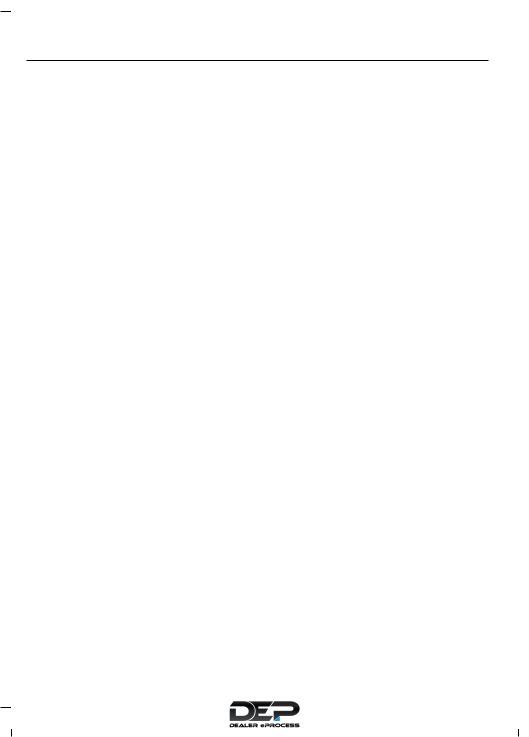
Table of Contents
Opening and Closing the Hood................ |
211 |
Under Hood Overview - 3.5L |
|
Ecoboost™................................................. |
213 |
Under Hood Overview - 3.7L.................... |
214 |
Under Hood Overview - 3.2L Power |
|
Stroke Diesel.............................................. |
215 |
Engine Oil Dipstick - 3.5L |
|
Ecoboost™................................................. |
216 |
Engine Oil Dipstick - 3.7L........................... |
216 |
Engine Oil Dipstick - 3.2L Power Stroke |
|
Diesel............................................................ |
216 |
Engine Oil Check........................................... |
216 |
Changing the Engine Oil and Oil |
|
Filter............................................................... |
217 |
Oil Change Indicator Reset....................... |
218 |
Engine Cooling Fan - E85/Gasoline...... |
218 |
Engine Cooling Fan - Diesel...................... |
218 |
Engine Coolant Check................................ |
218 |
Automatic Transmission Fluid |
|
Check............................................................ |
222 |
Brake Fluid Check........................................ |
223 |
Power Steering Fluid Check..................... |
223 |
Washer Fluid Check.................................... |
223 |
Draining the Fuel Filter Water Trap - 3.2L |
|
Power Stroke Diesel............................... |
224 |
Fuel Filter - Gasoline................................... |
226 |
Changing the 12V Battery......................... |
226 |
Checking the Wiper Blades...................... |
228 |
Changing the Wiper Blades..................... |
228 |
Adjusting the Headlamps......................... |
229 |
Removing a Headlamp............................. |
230 |
Changing a Bulb............................................ |
231 |
Bulb Specification Chart........................... |
236 |
Changing the Engine Air Filter................. |
237 |
Vehicle Care |
|
Cleaning Products....................................... |
239 |
Cleaning the Exterior.................................. |
240 |
Waxing............................................................. |
240 |
Cleaning the Engine..................................... |
241 |
4
Cleaning the Windows and Wiper |
|
Blades........................................................... |
241 |
Cleaning the Interior................................... |
242 |
Cleaning the Instrument Panel and |
|
Instrument Cluster Lens....................... |
243 |
Repairing Minor Paint Damage.............. |
244 |
Cleaning the Wheels.................................. |
244 |
Vehicle Storage............................................ |
244 |
Wheels and Tires |
|
General Information.................................... |
247 |
Tire Care.......................................................... |
248 |
Using Winter Tires....................................... |
265 |
Using Snow Chains..................................... |
265 |
Tire Pressure Monitoring System.......... |
266 |
Changing a Road Wheel........................... |
270 |
Technical Specifications........................... |
279 |
Capacities and Specific- |
|
ations |
|
Engine Specifications - 3.5L |
|
Ecoboost™................................................. |
281 |
Engine Specifications - 3.7L..................... |
281 |
Engine Specifications - 3.2L Power |
|
Stroke Diesel............................................. |
282 |
Motorcraft Parts - 3.5L Ecoboost™...... |
283 |
Motorcraft Parts - 3.7L.............................. |
284 |
Motorcraft Parts - 3.2L Power Stroke |
|
Diesel........................................................... |
285 |
Vehicle Identification Number............... |
286 |
Vehicle Certification Label....................... |
287 |
Transmission Code Designation............ |
287 |
Capacities and Specifications - 3.5L |
|
Ecoboost™................................................ |
288 |
Capacities and Specifications - 3.7L...... |
291 |
Capacities and Specifications - 3.2L |
|
Power Stroke Diesel............................... |
294 |
Audio System |
|
General Information................................... |
298 |
Audio Unit - Vehicles With: AM/FM...... |
299 |
Transit (TTH) Canada/United States of America, HK3J 19A321 AA enUSA,

Table of Contents
Audio Unit - Vehicles With: Premium AM/ |
Scheduled Maintenance |
|
||
FM/CD......................................................... |
302 |
General Maintenance Information |
427 |
|
Audio Unit - Vehicles With: AM/FM/CD/ |
||||
Normal Scheduled Maintenance |
430 |
|||
SYNC |
304 |
|||
Special Operating Conditions Scheduled |
||||
Audio Unit - Vehicles With: AM/FM/CD/ |
||||
Maintenance |
432 |
|||
SYNC/Satellite Radio |
306 |
|||
Scheduled Maintenance Record |
435 |
|||
Digital Radio.................................................. |
308 |
|||
Satellite Radio............................................... |
310 |
Appendices |
|
|
Audio Input Jack............................................ |
313 |
445 |
||
USB Port |
313 |
End User License Agreement................. |
||
|
|
|||
Media Hub....................................................... |
314 |
|
|
|
SYNC™ |
|
|
|
|
General Information.................................... |
315 |
|
|
|
Using Voice Recognition............................. |
317 |
|
|
|
Using SYNC™ With Your Phone............. |
319 |
|
|
|
SYNC™ Applications and Services....... |
331 |
|
|
|
Using SYNC™ With Your Media |
336 |
|
|
|
Player........................................................... |
|
|
||
SYNC™ Troubleshooting......................... |
345 |
|
|
|
SYNC™ 3 |
|
|
|
|
General Information................................... |
353 |
|
|
|
Home Screen................................................ |
363 |
|
|
|
Using Voice Recognition........................... |
364 |
|
|
|
Entertainment................................................ |
371 |
|
|
|
Phone................................................................ |
381 |
|
|
|
Navigation...................................................... |
386 |
|
|
|
Apps................................................................. |
394 |
|
|
|
Settings........................................................... |
397 |
|
|
|
SYNC™ 3 Troubleshooting..................... |
409 |
|
|
|
Accessories |
|
|
|
|
Accessories.................................................... |
422 |
|
|
|
Auxiliary Switches....................................... |
423 |
|
|
|
Ford Protect |
|
|
|
|
Ford Protect................................................... |
425 |
|
|
|
5
Transit (TTH) Canada/United States of America, HK3J 19A321 AA enUSA, |
Printing |

6
Transit (TTH) Canada/United States of America, HK3J 19A321 AA enUSA,

Introduction
ABOUT THIS MANUAL
Thank you for choosing Ford. We recommend that you take some time to get to know your vehicle by reading this manual. The more that you know about your vehicle, the greater the safety and pleasure you will get from driving it.
WARNING
Driving while distracted can result in loss of vehicle control, crash and injury. We strongly recommend that
you use extreme caution when using any device that may take your focus off the road. Your primary responsibility is the safe operation of your vehicle. We recommend against the use of any hand-held device while driving and encourage the use of voice-operated systems when possible. Make sure you are aware of all applicable local laws that may affect the use of electronic devices while driving.
Note: This manual describes product features and options available throughout the range of available models, sometimes even before they are generally available. It may describe options not fitted to the vehicle you have purchased.
Note: Some of the illustrations in this manual may show features as used in different models, so may appear different to you on your vehicle.
Note: Always use and operate your vehicle in line with all applicable laws and regulations.
Note: Pass on this manual when selling your vehicle. It is an integral part of your vehicle.
7
Note: Either Ford Motor Company or an authorized Ford dealer may have originally sold this incomplete vehicle to a vehicle modifier who upfitted it. As a result, it may have different options and features than described in this manual.
This manual may qualify the location of a component as left-hand side or right-hand side. The side is determined when facing forward in the seat.
E154903
A Right-hand side.
BLeft-hand side.
SYMBOLS GLOSSARY
These are some of the symbols you may see on your vehicle.
Safety alert
See Owner's Manual
Air conditioning system
Anti-lock braking system
Transit (TTH) Canada/United States of America, HK3J 19A321 AA enUSA, |
Printing |

Introduction
Avoid smoking, flames or sparks
Battery
Battery acid
Brake fluid - non petroleum based
Brake system
Cabin air filter
Check fuel cap
Child safety door lock or unlock
Child seat lower anchor
Child seat tether anchor
Cruise control
E71340
Do not open when hot
Engine air filter
Engine coolant
Engine coolant temperature
8
Engine oil
Explosive gas
Fan warning
Fasten seatbelt
Front airbag
Front fog lamps
Fuel pump reset
Fuse compartment
Hazard warning flashers
Heated rear window
Heated windshield
Interior luggage compartment release
Jack
Keep out of reach of children
Lighting control
Transit (TTH) Canada/United States of America, HK3J 19A321 AA enUSA,

Introduction
Low tire pressure warning
Maintain correct fluid level
Note operating instructions
Panic alarm
Parking aid
E139213
Parking brake
Power steering fluid
Power windows front/rear
Power window lockout
Service engine soon
Side airbag
Shield the eyes
 Stability control
Stability control
Windshield wash and wipe
DATA RECORDING
A large number of electronic components of your vehicle contain data storage modules temporarily or permanently storing technical data about the condition of the vehicle, events and malfunctions.
In general, this technical information documents the condition of parts, modules, systems or the environment:
•Operating conditions of system components (e.g. filling levels).
•Status messages of the vehicle and its individual components (e.g. number of wheel revolutions/rotational speed, deceleration, lateral acceleration).
•Malfunctions and defects in important system components (e.g. lighting and brake system).
•Vehicle reactions in particular driving situations (e.g. inflation of an airbag, activation of the stability regulation system).
•Environmental conditions (e.g. temperature).
These data are exclusively technical and help identification and correction of malfunctions as well as optimisation of vehicle functions. Motion profiles indicating travelled routes cannot be created with these data.
If services are used (e.g. repair works, service processes, warranty cases, quality assurance), employees of the service network (including manufacturers) are able to read out this technical information from the event and malfunction data storage modules using special diagnostic devices. If required, you will receive further information. After a malfunction has been corrected, these data are deleted from the malfunction storage module or they are constantly overwritten.
9
Transit (TTH) Canada/United States of America, HK3J 19A321 AA enUSA, |
Printing |

Introduction
When using the vehicle, situations may occur in which these technical data related to other information (accident report, damages on the vehicle, witness statements, etc.) may be associated with a specific person - possibly, with the assistance of an expert.
Additional functions contractually agreed upon with the client (e.g. vehicle location in emergency cases) allow the transmission of particular vehicle data from the vehicle.
CALIFORNIAPROPOSITION65
WARNINGS
Some constituents of engine exhaust, certain vehicle components, certain fluids contained in vehicles
and certain products of component wear contain or emit chemicals known to the State of California to cause cancer and birth defects or other reproductive harm.
Battery posts, terminals and related accessories contain lead and lead compounds, chemicals known to the
State of California to cause cancer and reproductive harm. Batteries also contain other chemicals known to the State of California to cause cancer. Wash your hands after handling.
PERCHLORATE
Certain components in your vehicle such as airbag modules, seatbelt pretensioners and remote control batteries may contain perchlorate material. Special handling may apply for service or vehicle end of life disposal.
10
For more information visit:
Web Address
www.dtsc.ca.gov/hazardouswaste/perchlorate
FORD CREDIT
US Only
Ford Credit offers a full range of financing and lease plans to help you acquire your vehicle. If you have financed or leased your vehicle through Ford Credit, thank you for your business.
We offer a number of convenient ways for you to contact us and help to manage your account.
Call 1-800-727-7000.
For more information about Ford Credit and access to the Account Manager, go to www.fordcredit.com.
REPLACEMENT PARTS RECOMMENDATION
We have built your vehicle to the highest standards using quality parts. We recommend that you demand the use of genuine Ford and Motorcraft parts whenever your vehicle requires scheduled maintenance or repair. You can clearly identify genuine Ford and Motorcraft parts by looking for the Ford, FoMoCo or Motorcraft branding on the parts or their packaging.
Transit (TTH) Canada/United States of America, HK3J 19A321 AA enUSA,

Introduction
Scheduled Maintenance and
Mechanical Repairs
One of the best ways for you to make sure that your vehicle provides years of service is to have it maintained in line with our recommendations using parts that conform to the specifications detailed in this Owner’s Manual. Genuine Ford and Motorcraft parts meet or exceed these specifications.
Collision Repairs
We hope that you never experience a collision, but accidents do happen. Genuine Ford replacement collision parts meet our stringent requirements for fit, finish, structural integrity, corrosion protection and dent resistance. During vehicle development we validate that these parts deliver the intended level of protection as a whole system. A great way to know for sure you are getting this level of protection is to use genuine Ford replacement collision parts.
Warranty on Replacement Parts
Genuine Ford and Motorcraft replacement parts are the only replacement parts that benefit from a Ford Warranty. The Ford Warranty may not cover damage caused to your vehicle as a result of failed non-Ford parts. For additional information, refer to the terms and conditions of the Ford Warranty.
SPECIAL NOTICES
New Vehicle Limited Warranty
For a detailed description of what is covered and what is not covered by your vehicle’s New Vehicle Limited Warranty, refer to the Warranty Manual that is provided to you along with your Owner’s Manual.
11
Special Instructions
For your added safety, your vehicle is fitted with sophisticated electronic controls.
WARNINGS
You risk death or serious injury to yourself and others if you do not follow the instruction highlighted by
the warning symbol. Failure to follow the specific warnings and instructions could result in personal injury.
Never place front seat mounted rear-facing child or infant seats in front of an active passenger airbag.
On Board Diagnostics Data Link
Connector
WARNING
Do not connect wireless plug-in devices to the data link connector. Unauthorized third parties could gain
access to vehicle data and impair the performance of safety related systems. Only allow repair facilities that follow our service and repair instructions to connect their equipment to the data link connector.
Your vehicle has an OBD Data Link Connector (DLC) that is used in conjunction with a diagnostic scan tool for vehicle diagnostics, repairs and reprogramming services. Installing an aftermarket device that uses the DLC during normal driving for purposes such as remote insurance company monitoring, transmission of vehicle data to other devices or entities, or altering the performance of the vehicle, may cause interference with or even damage to vehicle systems. We do not recommend or endorse the use of aftermarket plug-in devices unless approved by Ford. The vehicle Warranty will not cover damage caused by an aftermarket plug-in device.
Transit (TTH) Canada/United States of America, HK3J 19A321 AA enUSA, |
Printing |

Introduction
NoticetoOwnersofPickupTrucksand
Utility Type Vehicles
WARNING
Utility vehicles have a significantly higher rollover rate than other types of vehicles.
Before you drive your vehicle, please read this Owner’s Manual carefully. Your vehicle is not a passenger car. As with other vehicles of this type, failure to operate this vehicle correctly may result in loss of vehicle control, vehicle rollover, personal injury or death.
Using Your Vehicle With a Snowplow
Do not use this vehicle for snowplowing.
Your vehicle is not equipped with a snowplowing package.
Using Your Vehicle as an Ambulance
If your light truck is equipped with the Ford Ambulance Preparation Package, it may be utilized as an ambulance. Ford urges ambulance manufacturers to follow the recommendations of the Ford Incomplete Vehicle Manual, Ford Truck Body Builder’s Layout Book and the Qualified Vehicle Modifiers (QVM) Guidelines as well as pertinent supplements.
For additional information, please contact the Truck Body Builders Advisory Service:
Web Address
www.fleet.ford.com/truckbbas
You can also call us at
1–877–840–4338.
12
Other Vehicle Modifications
Ifconvertingormodifyingyourvehicle fromproduction specification,referto the Truck Body Builder Advisory website:
Web Address
www.fleet.ford.com/truckbbas
MOBILE COMMUNICATIONS EQUIPMENT
WARNING
Driving while distracted can result in loss of vehicle control, crash and injury. We strongly recommend that
you use extreme caution when using any device that may take your focus off the road. Your primary responsibility is the safe operation of your vehicle. We recommend against the use of any hand-held device while driving and encourage the use of voice-operated systems when possible. Make sure you are aware of all applicable local laws that may affect the use of electronic devices while driving.
Using mobile communications equipment is becoming increasingly important in the conduct of business and personal affairs. However, you must not compromise your own or others’ safety when using such equipment. Mobile communications can enhance personal safety and security when appropriately used, particularly in emergency situations. Safety must be paramount when using mobile communications equipment to avoid negating these benefits. Mobile communication equipment includes, but is not limited to, cellular phones, pagers, portable email devices, text messaging devices and portable two-way radios.
Transit (TTH) Canada/United States of America, HK3J 19A321 AA enUSA,
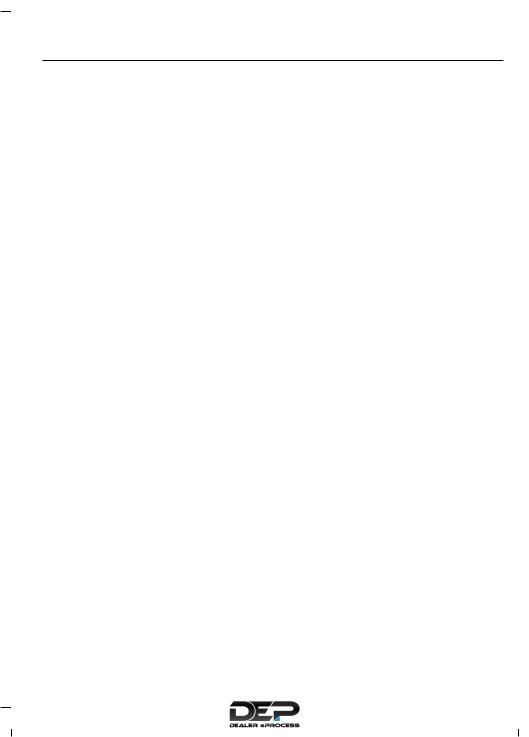
Introduction
EXPORT UNIQUE OPTIONS
For your particular global region, your vehicle may be equipped with features and options that are different from the features and options that are described in this Owner’s Manual. A market unique supplement may be supplied that complements this book. By referring to the market unique supplement, if provided, you can properly identify those features, recommendations and specifications that are unique to your vehicle. This Owner’s Manual is written primarily for the U.S. and Canadian Markets. Features or equipment listed as standard may be different on units built for export. Refer to this Owner’s
Manual for all other required information and warnings.
13
Transit (TTH) Canada/United States of America, HK3J 19A321 AA enUSA, |
Printing |

Environment
PROTECTING THE
ENVIRONMENT
You must play your part in protecting the environment. Correct vehicle usage and the authorized disposal of waste, cleaning and lubrication materials are significant steps toward this aim.
14
Transit (TTH) Canada/United States of America, HK3J 19A321 AA enUSA,
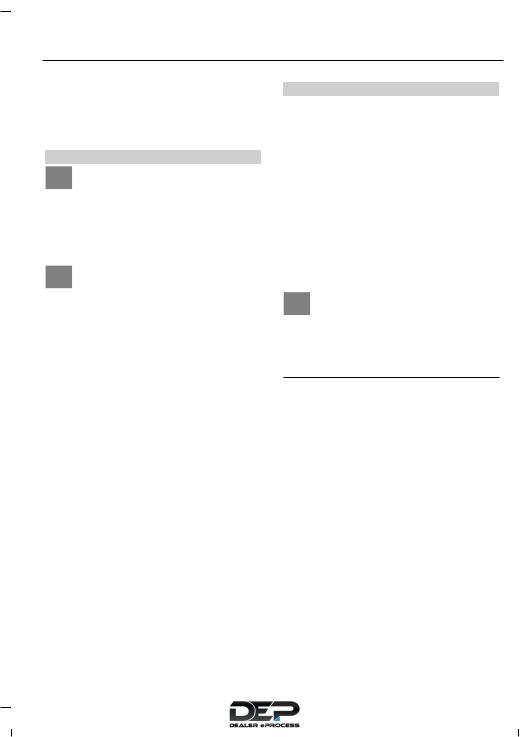
Child Safety
GENERAL INFORMATION
See the following sections for directions on how to properly use safety restraints for children.
WARNINGS
Always make sure your child is secured properly in a device that is appropriate for their height, age and
weight. Child safety restraints must be bought separately from your vehicle. Failure to follow these instructions and guidelines may result in an increased risk of serious injury or death to your child.
All children are shaped differently. The National Highway Traffic Safety Administration and other safety
organizations, base their recommendations for child restraints on probable child height, age and weight thresholds, or on the minimum requirements of the law. We recommend that you check with a NHTSA Certified Child Passenger Safety
15
WARNINGS
Technician (CPST) to make sure that you properly install the child restraint in your vehicle and that you consult your pediatrician to make sure you have a child restraint appropriate for your child. To locate a child restraint fitting station and CPST, contact NHTSA toll free at 1-888-327-4236 or go to www.nhtsa.dot.gov. In Canada, contact Transport Canada toll free at 1-800-333-0371 or go to www.tc.gc.ca to find a Child Car Seat Clinic in your area. Failure to properly restrain children in child restraints made especially for their height, age and weight, may result in an increased risk of serious injury or death to your child.
On hot days, the temperature inside the vehicle can rise very quickly. Exposure of people or animals to
these high temperatures for even a short time can cause death or serious heat related injuries, including brain damage. Small children are particularly at risk.
Transit (TTH) Canada/United States of America, HK3J 19A321 AA enUSA, |
Printing |

Child Safety
Recommendations for Safety Restraints for Children
Child
Infants or toddlers
Small children
Child size, height, weight, or age |
Recommended restraint |
|
type |
||
|
||
Children weighing 40 lb (18 kg) or less |
Use a child safety seat |
|
(sometimes called an |
||
(generally age four or younger). |
infant carrier, convertible |
|
|
seat, or toddler seat). |
|
Children who have outgrown or no longer |
|
|
properly fit in a child safety seat (gener- |
|
|
ally children who are less than 4 ft. 9 in. |
Use a belt-positioning |
|
(1.45 m) tall, are greater than age four |
||
and less than age 12, and between 40 lb |
booster seat. |
|
(18 kg) and 80 lb (36 kg) and upward to |
|
|
100 lb (45 kg) if recommended by your |
|
|
child restraint manufacturer). |
|
|
Children who have outgrown or no longer |
Use a vehicle seatbelt |
|
properly fit in a belt-positioning booster |
having the lap belt snug |
Larger children |
seat (generally children who are at least |
and low across the hips, |
4 ft. 9 in. (1.45 m) tall or greater than |
shoulder belt centered |
|
|
80 lb (36 kg) or 100 lb (45 kg) if recom- |
across the shoulder and |
|
mended by child restraint manufacturer). |
chest, and seatback |
|
|
upright. |
•You are required by law to properly use safety seats for infants and toddlers in the United States and Canada.
•Many states and provinces require that small children use approved booster seats until they reach age eight, a height of 4 feet 9 inches (1.45 meters) tall, or 80 lb (36 kg). Check your local and state or provincial laws for specific requirements about the safety of children in your vehicle.
•When possible, always properly restrain children 12 years of age and under in a rear seating position of your vehicle. Accident statistics suggest that children are safer when properly restrained in the rear seating positions than in a front seating position.
INSTALLING CHILD RESTRAINTS
Child Safety Seat
E142594
16
Transit (TTH) Canada/United States of America, HK3J 19A321 AA enUSA,

Child Safety
Use a child safety seat (sometimes called an infant carrier, convertible seat, or toddler seat) for infants, toddlers, or children weighing 40 lb (18 kg) or less (generally age four or younger).
Using Lap and Shoulder Belts
WARNINGS
Airbags can kill or injure a child in a child restraint. Never place a rear-facing child restraint in front of
an active airbag. If you must use a forward-facing child restraint in the front seat, move the seat upon which the child restraint is installed all the way back.
Airbags can kill or injure a child in a child restraint. Properly restrain children 12 and under in the rear seat
whenever possible.
Depending on where you secure a child restraint, and depending on the child restraint design, you may block
access to certain seatbelt buckle assemblies and LATCH lower anchors, rendering those features potentially unusable. To avoid risk of injury, make sure occupants only use seating positions where they are able to be properly restrained.
When installing a child safety seat with combination lap and shoulder belts:
•Use the correct seatbelt buckle for that seating position.
•Insert the belt tongue into the correct buckle until you hear a distinct click and feel it latch. Make sure the tongue is securely fastened in the buckle.
•Keep the buckle release button pointing up and away from the safety seat, with the tongue between the child restraint and the release button, to prevent accidental unbuckling.
17
•Place the vehicle seat upon which the child restraint will be installed in the upright position.
•Put the seatbelt in the automatic locking mode. See Step 5. Your vehicle does not require the use of a locking clip.
Perform the following steps when installing the child restraint with combination lap and shoulder belts:
Note: Although the child restraint illustrated is a forward facing child restraint, the steps are the same for installing a rearward facing child restraint.
E142528
1.Position the child safety seat in a seat with a combination lap and shoulder belt.
E142529
Transit (TTH) Canada/United States of America, HK3J 19A321 AA enUSA, |
Printing |

Child Safety
2.Pull down on the shoulder belt and then grasp the shoulder belt and lap belt together.
E142530
3.While holding the shoulder and lap belt portions together, route the tongue through the child restraint according to the child restraint manufacturer's instructions. Make sure the belt webbing is not twisted.
E142875
5.To put the retractor in the automatic locking mode, grasp the shoulder portion of the belt and pull downward until all of the belt is pulled out.
Note: The automatic locking mode is available on the front passenger and rear seats.
6.Allow the belt to retract to remove slack. The belt clicks as it retracts to indicate it is in the automatic locking mode.
7.Try to pull the belt out of the retractor to make sure the retractor is in the automatic locking mode (you should not be able to pull more belt out). If the retractor is not locked, unbuckle the belt and repeat Steps 5 and 6.
E142531
4.Insert the belt tongue into the correct buckle (the buckle closest to the direction the tongue is coming from) for that seating position until you hear a distinct click and feel the latch engage. Make sure the tongue is latched securely by pulling on it.
E142533
18
Transit (TTH) Canada/United States of America, HK3J 19A321 AA enUSA,
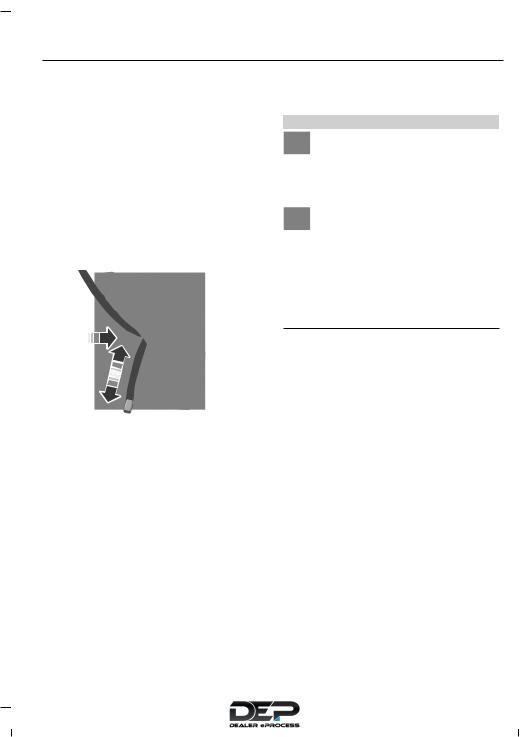
Child Safety
8.Remove remaining slack from the belt. Force the seat down with extra weight, for example, by pressing down or kneeling on the child restraint while pulling up on the shoulder belt. This is necessary to remove the remaining slack that exists once the extra weight of the child is added to the child restraint. It also helps to achieve the correct snugness of the child restraint to your vehicle. Sometimes, a slight lean toward the buckle helps to remove remaining slack from the belt.
9.Attach the tether strap (if the child restraint is equipped).
E142534
10.Before placing the child in the seat, forcibly move the seat forward and back to make sure the seat is securely held in place. To check this, grab the seat at the belt path and attempt to move it side to side and forward and back. There should be no more than 1 in (2.5 cm) of movement for correct installation.
We recommend checking with a NHTSA Certified Child Passenger Safety Technician to make certain the child restraint is correctly installed. In Canada, check with Transport Canada for referral to a Child Car Seat Clinic.
19
Using Lower Anchors and Tethers for Children (LATCH)
WARNINGS
Do not attach two child safety restraints to the same anchor. In a crash, one anchor may not be strong
enough to hold two child safety restraint attachments and may break, causing serious injury or death.
Depending on where you secure a child restraint, and depending on the child restraint design, you may block
access to certain seatbelt buckle assemblies and LATCH lower anchors, rendering those features potentially unusable. To avoid risk of injury, make sure occupants only use seating positions where they are able to be properly restrained.
The LATCH system is composed of three vehicle anchor points: two lower anchors where the seat backrest and seat cushion meet (called the seat bight) and one top tether anchor behind that seating position.
LATCH compatible child safety seats have two rigid or webbing mounted attachments that connect to the two lower anchors at the LATCH equipped seating positions in your vehicle. This type of attachment method eliminates the need to use seatbelts to attach the child restraint, however the seatbelt can still be used to attach the child restraint. For forward-facing child restraints, the top tether strap must also be attached to the correct top tether anchor, if a top tether strap has been provided with your child restraint.
Transit (TTH) Canada/United States of America, HK3J 19A321 AA enUSA, |
Printing |

Child Safety
E184881
E178552
E178551
E178553
Your vehicle has LATCH lower anchors for child restraint installation at the seating positions marked with the child restraint symbol.
Note: In addition to those shown, other seating positions may also have LATCH lower anchor points. You can identify these with the child restraint symbol shown on those seating positions.
20
Transit (TTH) Canada/United States of America, HK3J 19A321 AA enUSA,
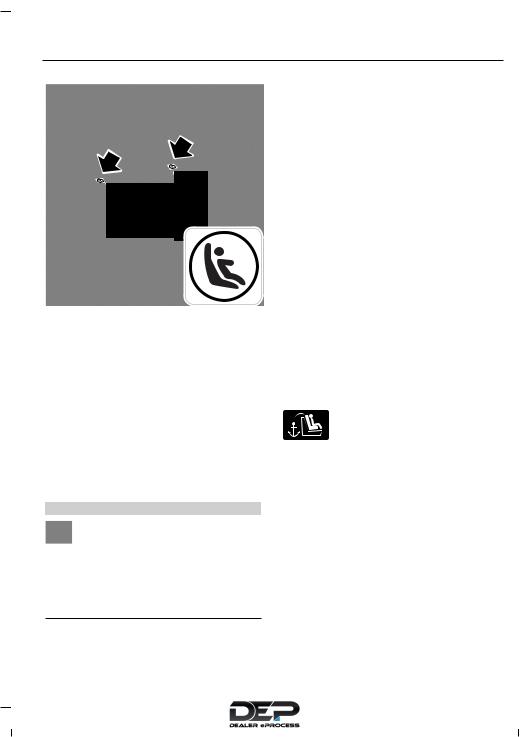
Child Safety
E177639
The LATCH anchors are at the rear section of the rear seat between the cushion and seat backrest above the symbols as shown. Follow the child restraint manufacturer's instructions to correctly install a child restraint with LATCH attachments. Follow the instructions on attaching child safety seats with tether straps.
Attach LATCH lower attachments of the child restraint only to the anchors shown.
UseofInboardLowerAnchorsfromthe
Outermost Seating Positions (Center
Seating Use)
WARNING
The standardized spacing for LATCH lower anchors is 11 in (280 mm) center to center. Do not use LATCH
lower anchors for the center seating position unless the child restraint manufacturer's instructions permit and specify using anchors spaced at least as far apart as those in this vehicle.
21
Do not attach a child restraint to any lower anchor if an adjacent child restraint is attached to that anchor.
Each time you use the safety seat, check that the seat is correctly attached to the lower anchors and tether anchor, if applicable. Tug the child restraint from side to side and forward and back where it is secured to your vehicle. The seat should move less than 1 in (2.5 cm) when you do this for a correct installation.
If the safety seat is not anchored correctly, the risk of a child being injured in a crash greatly increases.
Combining Seatbelt and LATCH Lower Anchors for Attaching Child Safety Seats
When used in combination, either the seatbelt or the LATCH lower anchors may be attached first, provided a correct installation is achieved. Attach the tether strap afterward, if included with the child restraint.
Using Tether Straps
Many forward-facing child safety seats include a tether strap which extends from the back of
the child safety seat and hooks to an anchoring point called the top tether anchor. Tether straps are available as an accessory for many older safety seats.
Contact the manufacturer of your child restraint for information about ordering a tether strap, or to obtain a longer tether strap if the tether strap on your safety seat does not reach the appropriate top tether anchor in your vehicle.
Once the child safety seat has been installed using either the seatbelt, the lower anchors of the LATCH system, or both, you can attach the top tether strap.
Transit (TTH) Canada/United States of America, HK3J 19A321 AA enUSA, |
Printing |

Child Safety
The tether strap anchors in your vehicle are in the following positions (shown from top view):
E184881
E178552
E178551
E178553
Perform the following steps to install a child safety seat with tether anchors:
Note: If you install a child restraint with rigid LATCH attachments, do not tighten the tether strap enough to lift the child restraint off your vehicle seat cushion when the child is seated in it. Keep the tether strap just snug without lifting the front of the child restraint. Keeping the child restraint just touching your vehicle seat gives the best protection in a severe crash.
22
Transit (TTH) Canada/United States of America, HK3J 19A321 AA enUSA,

Child Safety
Front Passenger Seating Position
1.Adjust the front passenger seat fully forward.
2.Route the child safety seat tether strap over the back of the seat, under the head restraint and between the head restraint posts.
E178096
23
Transit (TTH) Canada/United States of America, HK3J 19A321 AA enUSA, |
Printing |

Child Safety
3.Locate the correct anchor on the back panel of the rear seat for the selected
seating position. The anchors are labeled with the tether strap symbol and are partially covered by the gap panel. Pull the panel back to fully expose the anchors.
4.Clip the tether strap to the anchor as shown.
5.Adjust the front passenger seat full rearward.
6.Tighten the child safety seat tether strap according to the manufacturer's instructions. If your child restraint system is equipped with a tether strap, and the child restraint manufacturer
recommends its use, we also recommend its use.
Rear Seats
1.Route the child safety seat tether strap over the back of the seat, under the head restraint and between the head restraint posts.
E177640
2. Locate the correct anchor on the back panel of the rear seat for the selected seating position. The anchors are labeled with the tether strap symbol and are partially covered by the gap panel. Pull the panel back to fully expose the anchors.
3. Clip the tether strap to the anchor as shown.
4. Tighten the child safety seat tether strap according to the manufacturer's instructions. If your child restraint system has a tether strap, and the child restraint manufacturer recommends its use, we also recommend its use.
24
Transit (TTH) Canada/United States of America, HK3J 19A321 AA enUSA,

Child Safety
BOOSTER SEATS
WARNING
Never place, or allow a child to place, the shoulder belt under a child's arm or behind the back because it
reduces the protection for the upper part of the body and may increase the risk of injury or death in a crash.
Use a belt-positioning booster seat for children who have outgrown or no longer properly fit in a child safety seat (generally children who are less than 4 feet 9 inches (1.45 meters) tall, are greater than age four
(4) and less than age twelve (12), and between 40 pounds (18 kilograms) and 80 pounds (36 kilograms) and upward to 100 pounds (45 kilograms) if recommended by your child restraint manufacturer). Many state and provincial laws require that children use approved booster seats until they reach age eight, a height of 4 feet 9 inches (1.45 meters) tall, or 80 pounds (36 kilograms).
Booster seats should be used until you can answer YES to ALL of these questions when seated without a booster seat:
•Can the child sit all the way back against their vehicle seat back with knees bent comfortably at the edge of the seat cushion?
•Can the child sit without slouching?
•Does the lap belt rest low across the hips?
•Is the shoulder belt centered on the shoulder and chest?
•Can the child stay seated like this for the whole trip?
Always use booster seats in conjunction with your vehicle lap and shoulder belt.
Types of Booster Seats
E68924
•Backless booster seats
|
|
If your backless booster seat has a |
|
|
removable shield, remove the shield. If a |
|
|
vehicle seating position has a low seat |
|
|
back or no head restraint, a backless |
|
|
booster seat may place your child's head |
|
|
(as measured at the tops of the ears) |
|
|
above the top of the seat. In this case, |
|
|
move the backless booster to another |
|
|
seating position with a higher seat back or |
|
|
|
|
|
head restraint and lap and shoulder belts, |
E142595 |
|
or consider using a high back booster seat. |
25
Transit (TTH) Canada/United States of America, HK3J 19A321 AA enUSA, |
Printing |

Child Safety
E70710
•High back booster seats
E142596
E142597
If, with a backless booster seat, you cannot find a seating position that adequately supports your child's head, a high back booster seat would be a better choice.
Children and booster seats vary in size and shape. Choose a booster that keeps the lap belt low and snug across the hips, never up across the stomach, and lets you adjust the shoulder belt to cross the chest and rest snugly near the center of the shoulder. The following drawings compare the ideal fit (center) to a shoulder belt uncomfortably close to the neck and a shoulder belt that could slip off the shoulder. The drawings also show how the lap belt should be low and snug across the child's hips.
26
Transit (TTH) Canada/United States of America, HK3J 19A321 AA enUSA,
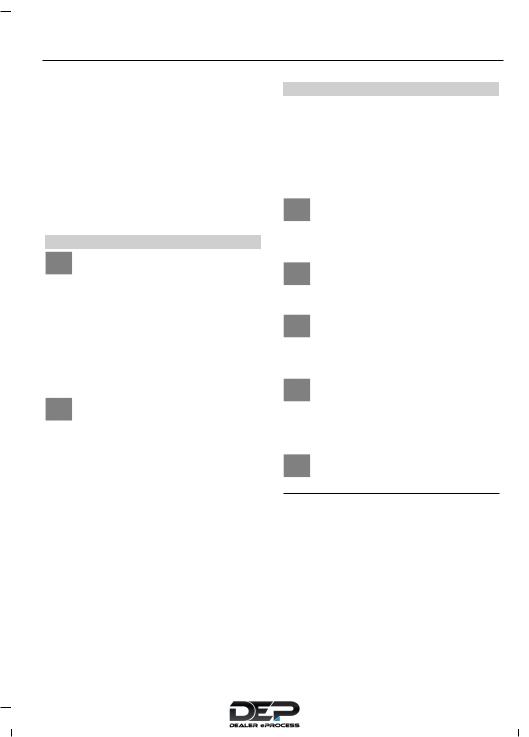
Child Safety
If the booster seat slides on the vehicle seat upon which it is being used, placing a rubberized mesh sold as shelf or carpet liner under the booster seat may improve this condition. Do not introduce any item thicker than this under the booster seat. Check with the booster seat manufacturer's instructions.
CHILD RESTRAINT
POSITIONING
WARNINGS
Airbags can kill or injure a child in a child seat. Never place a rear-facing child seat in front of an active airbag.
If you must use a forward-facing child seat in the front seat, move the vehicle seat upon which the child seat is installed all the way back. When possible, all children age 12 and under should be properly restrained in a rear seating position. If all children cannot be seated and restrained properly in a rear seating position, properly restrain the largest child in the front seat.
Always carefully follow the instructions and warnings provided by the manufacturer of any child
restraint to determine if the restraint device is appropriate for your child's size, height, weight, or age. Follow the child restraint manufacturer's instructions and warnings provided for installation and use in
WARNINGS
conjunction with the instructions and warnings provided by your vehicle manufacturer. A safety seat that is improperly installed or utilized, is inappropriate for your child's height, age, or weight or does not properly fit the child may increase the risk of serious injury or death.
Never let a passenger hold a child on his or her lap while your vehicle is moving. The passenger cannot
protect the child from injury in a crash, which may result in serious injury or death.
Never use pillows, books, or towels to boost a child. They can slide around and increase the likelihood
of injury or death in a crash.
Always restrain an unoccupied child seat or booster seat. These objects may become projectiles in a crash or
sudden stop, which may increase the risk of serious injury.
Never place, or allow a child to place, the shoulder belt under a child's arm or behind the back because it
reduces the protection for the upper part of the body and may increase the risk of injury or death in a crash.
To avoid risk of injury, do not leave children or pets unattended in your vehicle.
27
Transit (TTH) Canada/United States of America, HK3J 19A321 AA enUSA, |
Printing |
